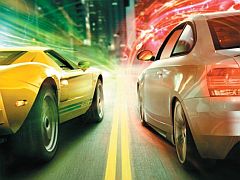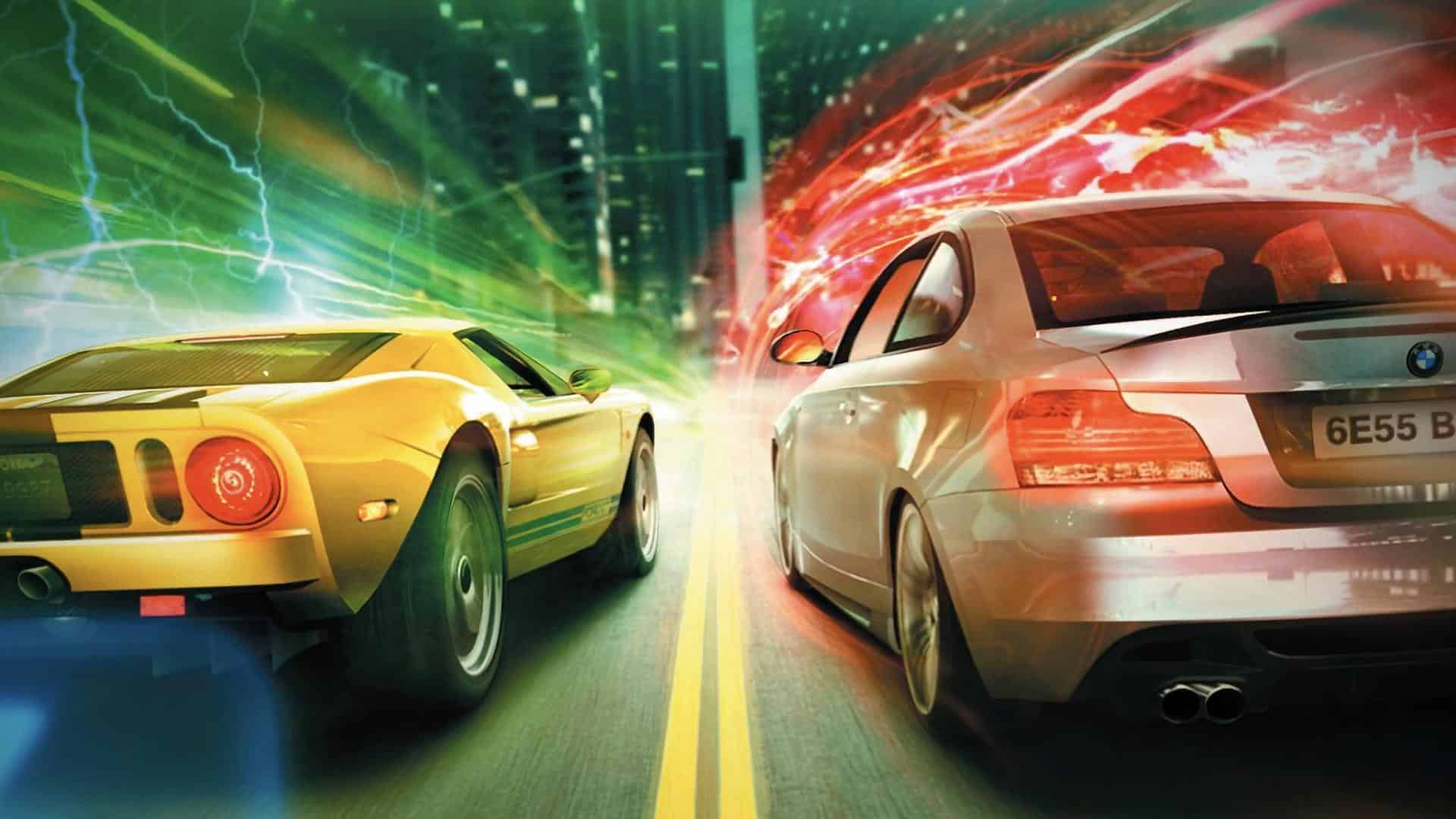You can trust VideoGamer. Our team of gaming experts spend hours testing and reviewing the latest games, to ensure you're reading the most comprehensive guide possible. Rest assured, all imagery and advice is unique and original. Check out how we test and review games here
I didn’t like the idea of Blur. Ever since I was told about Bizarre Creations’ first game for Activision, I couldn’t help but feel disappointed. I love PGR. PGR2 is one of my all-time favourite games and the studio’s last game in the series, PGR4, is up there with the best racers available for the Xbox 360. Those titles were all about finding the fine line between precision and style, pitting you and your chosen car against the challenges of real city courses. Blur, by contrast, is about firing homing missiles at your opponents. Or at least that’s what I thought until I sunk hours and hours into its addictive single and multiplayer modes. Blur is anything but a disappointment.
Labelling Blur as grown up Mario Kart is a bit unfair on both titles, but it gets the point across. As in Mario Kart, you get access to a variety of pick-ups, races can change completely in a second and multiplayer is where the game excels – but there’s so much more to Bizarre’s racer. The use of pick-ups and your tolerance for the element of chance will ultimately determine how much you love or hate Blur. Of the eight power-ups, picked up by driving over their icons on the race tracks, the majority are fairly self explanatory. Nitro, mine, shield and repair do exactly what they say on the tin, but shunt, bolt, shock and barge take a little explaining. Shunt is essentially the red shell from Mario Kart, firing off a homing missile; bolt equips you with a number of quick-fire laser-like bullets; barge releases a shockwave around your car that pushes anyone close enough; and shock places electrical whirlwinds near the current race leaders.
Key to Blur’s success is that these power-ups, and their effects on you during races, rarely feel unfair. You can carry up to three at once and cycle through them, and this gives you quite a lot of tactical options. Most attacks can either be avoided or blocked in some way, and can furthermore be fired forwards or backwards. So, someone might fire a homing shunt, but if you time the release of a backwards bolt as the projectile approaches, you can blow it up before it reaches you.
There are little defensive moves like this for many of the power-ups, so if you don’t instantly use them as soon as they’re acquired, in theory you will have some means to protect yourself. Of course, this is easier said than done, and if you’re attacked by a sequence of projectiles your defences will almost certainly run out. There’s always an element of misfortune that will send you crashing out and plummeting down the pack, but it’s not nearly as wild as what’s seen in the Mario Kart series.
The single-player career mode is hugely addictive, offering a series of tiers packed with multiple events. These fall into three categories: straight up races (with power-ups), checkpoint runs (hitting the required number of checkpoints before the time reaches zero), and target shooting (using a quick-fire weapon to take down other racers, each adding more time to the ticking clock). Your success in these will reward you with Lights, which in turn unlock new events to try and eventually the next tier.
Each tier is watched over by a rival who can be challenged to a one-on-one race as soon as you meet their demands, which take the form of specific targets within the previous events. There’s no immediate obligation to seek out these battles, but since success here will unlock their special car and mod (a perk that grants you an in-race bonus or ability), they’re well worth doing.
Kudos, a staple of the PGR series, is absent here, but in its place is the fan system. Performing certain tasks, such as hitting an enemy with a bolt while powersliding, will gain you extra fans – a currency that unlocks new cars and increases your rank. During events there are also optional fan demands and runs, activated by driving over specific icons. Each of these throws up a spontaneous challenge that, if completed, can further add to your swelling fanbase.
All this, combined with a handling model that feels very much like the sim/arcade mix found in PGR4, makes for some thrilling gameplay. Cars have a real weight to them, fighting against the rules of physics as you try to stay in control while sliding around corners at insane speed. Despite its arcade appearance, this isn’t an easy game. Trying to concentrate on the racing line (or cornering properly at all), while thinking about the projectiles coming up the road behind you and what power-up you need to have selected to combat it, is rock hard but great fun.
You’ll likely be able to invest tens of hours into completing the single-player career, but the real meat lies in Blur’s multiplayer. Four-player split-screen is hugely enjoyable, either using pre-set event playlists or creating a custom one of your own, and the game holds up well despite having to display four mini screens. This is simply the starter, though, for a packed multiplayer experience. With up to 20 players competing against each other, power-ups flying all over the place, I’ve never played an online racer so action packed, chaotic and addictive.
Even with 20 racers screaming along, the net code holds up remarkably well. There are also cool little post-race awards and, most importantly, a ranking system and online challenges. Just as in games like Modern Warfare 2, your achievements during online races result in points, which over time increase your rank. Fans gained online, through the challenge system and for performing certain moves, unlock new cars. The mods online work differently too, with three slots available to fill with perks and abilities that you’ve unlocked. PGR4 had some of the best online integration I’d ever seen in a racer, yet Blur sets a new benchmark.
If simply taking part in events online isn’t enough, you can challenge friends to beat your scores, sending them in-game messages or telling them via Facebook or Twitter using the slick in-built integration. By using Geometry Wars 2-style friend highscores on screen, you’re always aware of what you need to beat, keeping you hooked each time your best is bettered. Simply put, there’s enough content in the multiplayer/online portion of the game to make this the only racer you’ll need for months and months.
Bizarre games always feature slick presentation, and Blur is no exception. While the in-game visuals lack the in-your-face awesomeness of the recently released Split/Second, the style on show is brilliant, with plenty of moody lighting and neon lights. Weapon effects are incredible too, adding an immeasurable amount of cool to proceedings, contorting the field of view as they tear towards their target. Sassy, Basement Jaxx-like house and electronica forms the backing for every race, and the sound effects for the power-ups are equally impressive: each pick-up has its own distinctive noise, and when you’re on the receiving end of an attack it sounds like the air around you is being distorted – get hit by a bolt and you’ll hear what can only be described as a transformer changing form.
The problems here aren’t necessarily what Bizarre that did wrong, but issues PGR fans might have. While you can have no power-ups in multiplayer races, the only pure driving events in single-player come from the checkpoint races. Here you still have nitro power-ups though, and the lack of true time trials is a disappointment – though they’d be perfect for a large DLC pack if you ask me (Are you reading this, Bizarre?). There’s also the argument that race position is too dependent on luck, which despite not being true, will seem accurate to anyone who doesn’t invest the time learning the nuances of Blur’s gameplay.
I still want Bizarre to make a true successor to PGR, but I’m glad it made Blur too. It really is a modern take on the Mario Kart formula, done in a way that feels incredibly cool and refreshing. It’s a game anyone could pick up and enjoy, yet there’s depth here that only the very best players will appreciate. It’s a game built around power-ups that doesn’t feel unfair, and features a multiplayer mode that will grab you and not let go. Best arcade racer of the year? Nothing is certain, but it’ll be incredibly hard to beat.

/https://oimg.videogamer.com/images/c194/blur_42.jpg)
/https://oimg.videogamer.com/images/f705/blur_36.jpg)
/https://oimg.videogamer.com/images/49a3/blur_40.jpg)






